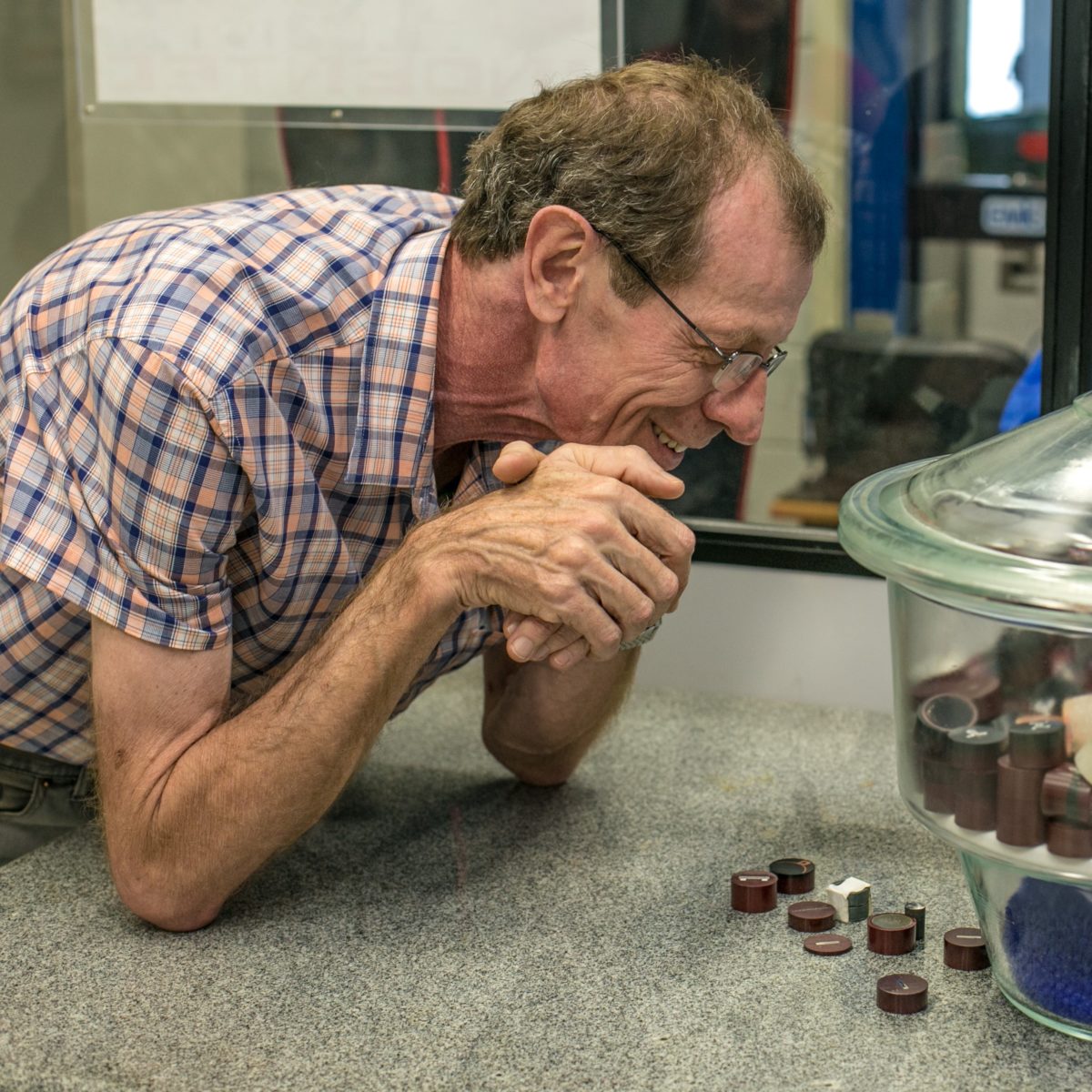
Ricardo Rodrigues observes metal samples at the LNLS Materials Lab in 2014. (Photo by Julio Fujikawa)
Ricardo Rodrigues could unite enthusiasm, creativity, technical and scientific knowledge
The engineer and physicist Ricardo Rodrigues (Antonio Ricardo Droher Rodrigues), leader of the engineering team which developed Sirius, has died on January, 3rd, 2020. Sirius is the second synchrotron light source in Brazil, and it is currently being commissioned at the Brazilian Center for Research in Energy and Materials (CNPEM).
Born in Curitiba, Brazil, on November, 10th, 1951, Ricardo was the technical leader of the pioneer project which gave Brazil the first synchrotron light source in the Southern Hemisphere. UVX was developed and built from 1987 to 1997 in the Brazilian Synchrotron Light Laboratory (LNLS), one of CNPEM’s National Laboratories.
In 1979, Ricardo earned his doctorate in physics at King’s College, in London, led by Michael Hart with the project “X-ray Optics for Synchrotron Radiation”. He became a physics professor at the Brazilian Federal University of Paraná (UFPR), and there started activities at the X-ray Optics and Instrumentation Group (GORXI), later renamed the Laboratory of X-ray Optics and Instrumentation (LORXI).
In 1984, Ricardo Rodrigues went to the University of São Paulo’s Institute of Physics and Chemistry, in São Carlos, invited by the Group of Optics. His dynamism, creativity and ability to propose solutions for X-ray application in scientific experiments immediately caught the attention of everyone who worked in the field.
Not by chance, Ricardo Rodrigues was involved, from the beginning, with the Synchrotron Radiation Project, started at the Brazilian Center for Physical Research (CBPF). This project resulted in the creation of LNLS, set up in Campinas from 1987. Under Ricardo’s technical leadership, a team formed by university students reached a dream that seemed impossible: to design, develop and operate a synchrotron light source, previously existing only in developed countries. The tool was intended for scientific research in the fields of physics, chemistry, biology, materials engineering, among others.
It took ten years of work for Brazil to join, in 1997, a select group of countries, as the first country in the Southern Hemisphere with a synchrotron light source. This equipment was designed under the coordination of Ricardo Rodrigues and operated until 2019. With the construction of UVX’s synchrotron light source, a community estimated in over six thousand researchers have conducted scientific experiments at LNLS.
In 2001, Ricardo withdrew his position at LNLS for personal reasons and created a company, SKEDIO Tecnologia. During this period, he has contributed to projects addressing a broad spectrum of areas, ranging from the fine arts to construction and healthcare, as examples.
In 2009, Antonio José Roque da Silva took over as director of LNLS and persuaded Ricardo Rodrigues’ return to CNPEM. The new mission was to develop a new synchrotron light source in Brazil, initially a third-generation machine.
A demonstrative example of Ricardo’s creative ability and enthusiasm to materialize seemingly impossible dreams occurred in 2012, when an International Scientific Committee made up of specialists came to CNPEM. Specially convened to evaluate the project then conceived, the committee recommended the construction of more sophisticated equipment, that could remain internationally competitive for many years. From this challenge came what would become the Sirius syncrotron light source. “I remember Ricardo at a dinner with the committee members, and his reaction to that proposal, saying ‘I agree!’ Immediately. This was the kind of challenge that Ricardo Rodrigues did not reject,” says Roque, current Director-General of CNPEM and Director of the Sirius project.
From 2012 to 2019, Ricardo was responsible for leading the team that developed a set of innovative solutions which made Sirius one of the promising world leaders among synchrotron light sources. In mid-December 2019, diagnosed with cancer, Ricardo Rodrigues saw Sirius undergoing a successful commissioning, including test experiments to obtain a tomographic image, proving the success of the project which he coordinated until a few days before his death.
Ricardo Rodrigues could unite enthusiasm, creativity, technical and scientific knowledge, and find new solutions required to build highly technological and sophisticated equipment. Most importantly, he was a people mentor. Opposed to academic formalities, and recognized worldwide as a creative problem solver, Ricardo Rodrigues will be dearly missed. His career will shine as a constant inspiration to those in Brazil dedicated to science, technology and innovation.
Two days after storing electrons in Sirius’ storage ring, the team have performed the first x-ray microtomography analysis at the new source
The new Brazilian synchrotron light source continues its successful commissioning